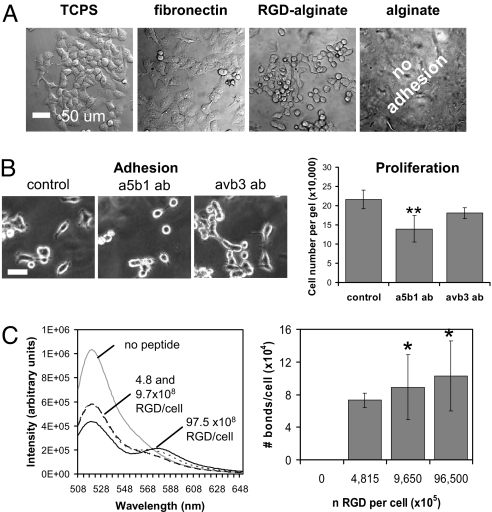Fig. 1.
Cell binding and integrin engagement. (A) Two-dimensional adhesion studies verified that OSCC-3 adhered to RGD-functionalized alginate in a manner comparable with TCPS and TCPS coated with fibronectin (fibronectin), whereas seeding cells on nonmodified alginate matrices (alginate) did not result in cell adhesion. (B) Inhibition of α5β1 integrins with function blocking antibodies (a5b1 ab) decreased adhesion and proliferation of OSCC-3 on 2D RGD-alginate substrates compared with control conditions, whereas no statistically significant differences were detected after inhibition of αvβ3 integrins (avb3 ab). (Scale bar: 50 μm.) **, P < 0.01. (C) FRET analysis to quantify the number of receptor–ligand bonds formed between cells in 3D culture and RGD peptides coupled to the polymer. Increasing the number of RGD peptides significantly increased integrin engagement by RGD-functionalized alginates as detected by increased energy transfer (decreased donor fluorescein emission intensity at λ = 520 nm; increased acceptor emission at λ = 580 nm). *, P < 0.05. Changes in energy transfer were translated into absolute bond numbers per cell as a function of the number of RGD ligands available to each cell (n RGD per cell), as described in ref. 7, and no bonds were noted in the absence of RGD ligands.

